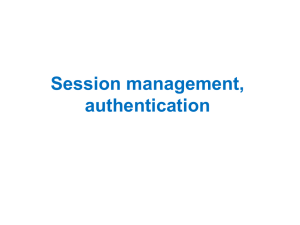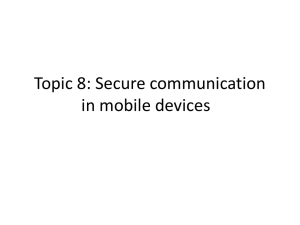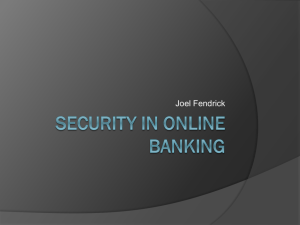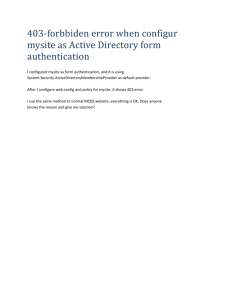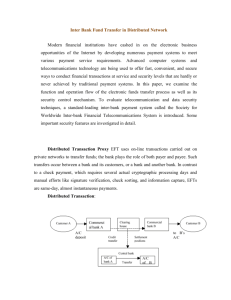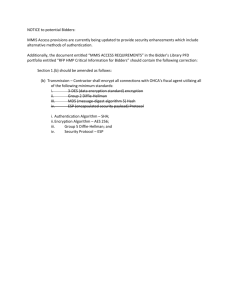Employing Web Authentication and Encryption Technologies
advertisement
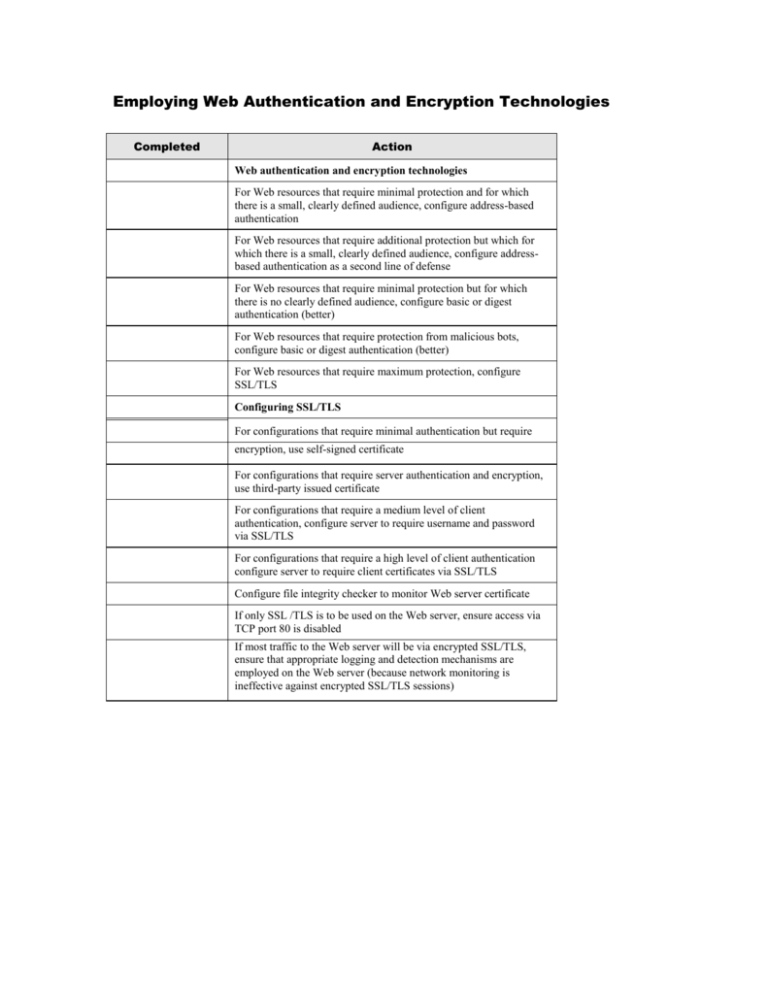
Employing Web Authentication and Encryption Technologies Completed Action Web authentication and encryption technologies For Web resources that require minimal protection and for which there is a small, clearly defined audience, configure address-based authentication For Web resources that require additional protection but which for which there is a small, clearly defined audience, configure addressbased authentication as a second line of defense For Web resources that require minimal protection but for which there is no clearly defined audience, configure basic or digest authentication (better) For Web resources that require protection from malicious bots, configure basic or digest authentication (better) For Web resources that require maximum protection, configure SSL/TLS Configuring SSL/TLS For configurations that require minimal authentication but require encryption, use self-signed certificate For configurations that require server authentication and encryption, use third-party issued certificate For configurations that require a medium level of client authentication, configure server to require username and password via SSL/TLS For configurations that require a high level of client authentication configure server to require client certificates via SSL/TLS Configure file integrity checker to monitor Web server certificate If only SSL /TLS is to be used on the Web server, ensure access via TCP port 80 is disabled If most traffic to the Web server will be via encrypted SSL/TLS, ensure that appropriate logging and detection mechanisms are employed on the Web server (because network monitoring is ineffective against encrypted SSL/TLS sessions)
